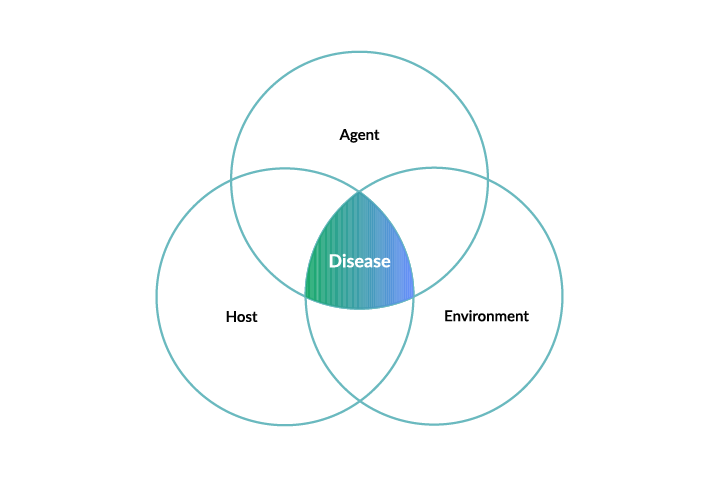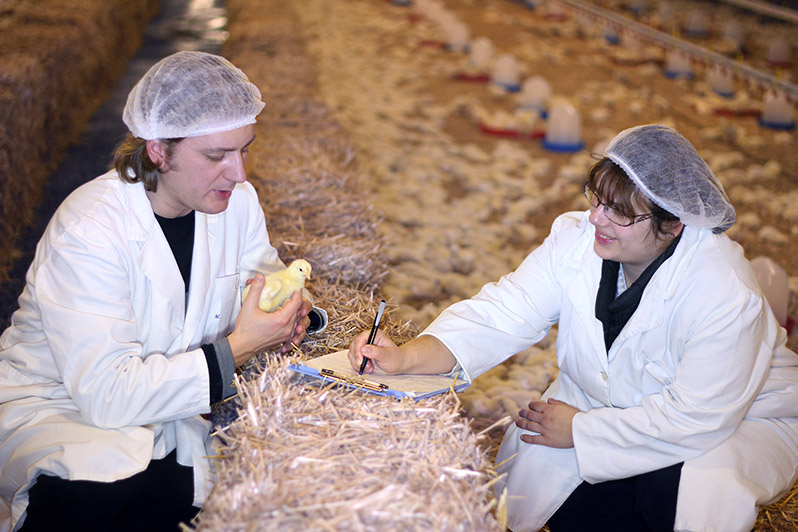Section 1 | An Overview of Necrotic Enteritis
Industry
Page 04 /
Clinical Signs and Risk Factors
Clinical Signs
NE can look like several different diseases.
There are 3 general presentations you might see in your flock1:
- Acute NE: High death rates in the flock, but very few birds that look sick
- Birds are dying quickly, or even before they show signs of illness
- Protracted NE: Sometimes you’ll see a lot of sickness in the flock
- In this case, you will see many birds with depression, reduced feed intake and weight gain, ruffled feathers, and diarrhea
- Subclinical NE: There is a mild form of NE
- You won’t see anything clinically, other than reduced weight gain, feed conversion, and condemnation due to liver lesions

Source: Conversion Feeds Ltd.

Source: Jones-Hamilton Ag
Risk Factors for NE
Infection with C. perfringens alone is not always enough to cause necrotic enteritis (NE).
There are a variety of other factors that determine whether or not a flock experiences disease. Observing NE in a group of birds is due to a complex interplay between host (e.g. bird), agent (e.g. C. perfringens), and environmental factors. We call this the epidemiological triad (as seen in the figure below).

Figure: The epidemiologic triad of disease causation
In order to prevent NE, it is important for you to understand the factors that contribute to disease in your flock. Armed with this understanding, you can critically evaluate your management and environment to develop sound prevention strategies with your flock veterinarian.
Check out our page on the Key Aspects of Animal Husbandry.
To learn more about developing and maintaining a relationship with a veterinarian,, read our case study:
VCPR and Smallholder Chicken Flocks in Ontario

References
- Kaldhusdal M, Jordan FTW. Clostridia. In: Poultry Diseases. 6th ed. Elsevier Ltd.; 2008. p. 200–14.